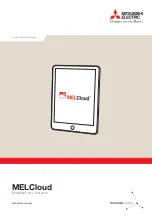
2010-10-26
Network Design and Engineering Guide
129
Data Networking
SkyWAN
®
Frame Relay Networking Features
-
Committed Burst Size (Bc)
-
Excess Burst Size (Be)
If traffic shaping is enabled on a serial port, the received data volume within a measurement
period Tc = Bc/CIR is monitored on each PVC. Received packets will be
-
accepted for forwarding to satellite if the received data volume for a measurement period
is < Bc.
-
accepted but “tagged” if the received data volume is between Bc and (Bc + Be).
-
discarded at ingress if the received data volume is > (Bc + Be).
Tagging of a FR packet means setting the Discard Eligibility (DE) bit in the FR header to 1. Note
that traffic shaping
-
must be enabled for ports with realtime services. The definition of CIR and Bc is necessary
to define the required amount of streaming bandwith for the realtime services and the traffic
shaping functionality ensures that the amount of user traffic will be limited to the configured
CIR. The value for Be must be set to 0.
-
is optional for ports with only non-realtime services. If traffic shaping is disabled, user data
up to the serial port speed will be accepted and traffic policy parameters will be ignored.
-
should be disabled for ports with
Sky
WAN
®
FAD service.
Realtime Service for Isochronous FRAD Ports
An exception to these rules is the realtime service for isochronous FRAD ports. Here the con-
figured serial port speed defines the required amount of streaming bandwidth and automatical-
ly limits the user traffic to this value. Hence no traffic policy parameters must be defined and
traffic shaping should be disabled.
Congestion Management of Non-Realtime FR Packets
Congestion Management of non-realtime Frame Relay packets is determined by the conges-
tion status of each satellite carrier. Depending on the filling level of the non-realtime transmit
queue, a satellite carrier may be in one of the following congestion states:
-
no congestion
-
mild congestion
-
heavy congestion
-
severe congestion
The following procedures will be applied, if a congestion state is reached:
-
At mild congestion FR packets will be marked by setting the Forward Explicit Congestion
Notification (FECN) bit in the packet header.
-
At heavy congestion only packets with DE=0 will still be accepted in the transmit queue,
tagged (DE=1) packets will be discarded.
-
At severe congestion all non-realtime FR packets will be discarded.
Real time packets should never experience congestion, as the realtime PVCs should only be-
come active if enough streaming capacity for the defined PVC CIR could be allocated on the
carrier. In the case of
Sky
WAN
®
FAD realtime services will be blocked (e.g. voice calls) if not
enough capacity can be allocated.
Содержание SKYWAN IDU 1070
Страница 1: ......
Страница 2: ......
Страница 6: ...Page intentionally left blank 2 Network Design and Engineering Guide 2010 10 26 ...
Страница 12: ...Page intentionally left blank 8 Network Design and Engineering Guide 2010 10 26 ...
Страница 16: ...Page intentionally left blank 12 Network Design and Engineering Guide 2010 10 26 ...
Страница 22: ...Page intentionally left blank 18 Network Design and Engineering Guide 2010 10 26 ...
Страница 76: ...Page intentionally left blank 72 Network Design and Engineering Guide 2010 10 26 ...
Страница 134: ...Page intentionally left blank 130 Network Design and Engineering Guide 2010 10 26 ...
Страница 138: ...Page intentionally left blank 134 Network Design and Engineering Guide 2010 10 26 ...
Страница 144: ...Page intentionally left blank 140 Network Design and Engineering Guide 2010 10 26 ...
Страница 153: ......
Страница 154: ...www ndsatcom com ...
















































